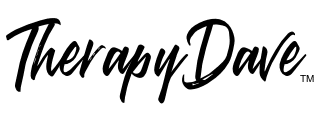SimplePractice is a practice management software used by therapists and wellness professionals to handle scheduling, billing, and client records. Initially designed for solo practitioners, it hasn’t been without its growing pains. What follows is the lesser-known yet essential history behind this influential product.
A Brief History
Back during the early 2000’s, therapists found themselves drowning in sticky notes, scheduling conflicts, and an array of client records stored in mismatched filing cabinets. The landscape of practice management software specifically tailored to therapists and small practices was relatively sparse. Those that existed were clunky, impersonal, and seemingly designed by someone who had never spent a day running a private practice. Into this chaos stepped Howard Spector.
The Founder’s Journey
Howard Spector earned his Master of Arts in Counseling Psychology in 2004 and started out as an associate marriage & family therapist. Instead of immediately completing his path toward licensure, he became sidetracked with software development and ultimately left the field of behavioral health in 2010 (though he had accumulated his 3,000 clinical hours). During his time as an associate therapist, he started working on a product (TrackYourHours) which he formalized (OnTrack Applications LLC) in 2007 and sold in 2012. This likely gave him the funding and momentum he needed for his next venture, SimplePractice.
The Birth of SimplePractice
In 2012, SimplePractice started taking shape. Spector would personally attend local CAMFT (California Association of Marriage and Family Therapists) chapter meetings to market SimplePractice. He started with a focus on solo practitioners and cash-only practices, but quickly realized this was limiting. Together with Ralph Zimmermann as CTO and Spector as CEO, they positioned SimplePractice as a flexible practice management solution for therapists.
Early Challenges
SimplePractice was not without its fair share of challenges. Early iterations were functional but far from perfect, and it took years of feedback and iteration to refine the platform into what therapists know today. Along the way, some decisions ruffled feathers – like offering pricing tiers that left smaller practices wondering if they were getting a fair shake.
Of course, the rise of SimplePractice didn’t happen in a vacuum. Competitors in the field were emerging, each promising the same golden ticket to freedom from administrative headaches. Some therapists, skeptical after years of clunky software, dismissed SimplePractice as another too-good-to-be-true platform. Others jumped on board, drawn by its sleeker interface and apparent focus on mental health professionals, not just generic medical practices.
Evolution and Growth
As SimplePractice grew, so did its complexity. What began as a solution for scheduling and billing morphed into a platform loaded with features like telehealth and client portals. Depending on whom you ask, this evolution was either a natural response to the demands of its user base – or a step toward becoming the very kind of bloated software it once aimed to replace. Following multiple acquisitions, there have been indications that SimplePractice may be moving away from catering primarily to small practices, causing some discontent among its original user base.
And yet, for all its quirks, SimplePractice is a unique convergence of frustration, innovation, and perhaps a little luck. It’s the kind of story that reminds us that even the best solutions don’t come out of thin air – they’re forged in the fires of user complaints, trial and error, and countless facepalm-worthy moments.
Current State
So here we are: a platform used by thousands of therapists, still celebrated by some and critiqued by others. Much like the world of therapy itself, SimplePractice thrives in the space between “this is great” and “this could use some work.” But at least it’s a step forward – and in a field that’s so often about progress, that’s saying something.
A Brief Timeline
- 2012: Howard Spector registers SimplePractice as a single-member LLC in California.
- 2014: SimplePractice integrates insurance billing features to create, submit, track, and reconcile insurance claims electronically.
- 2018: SimplePractice expands to include telehealth.
- 2021: SimplePractice is acquired by EngageSmart, making SimplePractice one of its solutions. At this time, SimplePractice has over 100,000 customers and an annual revenue of $100 million.
- 2022: Howard Spector resigns from EngageSmart, remarking that he knows when it’s time to make a switch or move on to something new when he’s no longer excited about what he’s doing.
- 2023: SimplePractice acquires assets of Luminello, an electronic medical record and practice management platform, for $19.6 million.
- 2024: EngageSmart (SimplePractice’s parent company) is acquired by Vista Equity Partners, taking the company private in a deal valued at $4 billion. Spector joins the Board of Directors at Heard, a financial management platform for therapists.
- 2025: SimplePractice serves over 200,000 health and wellness professionals. The company currently reports a revenue of $18.1 million and employs over 500 people.
